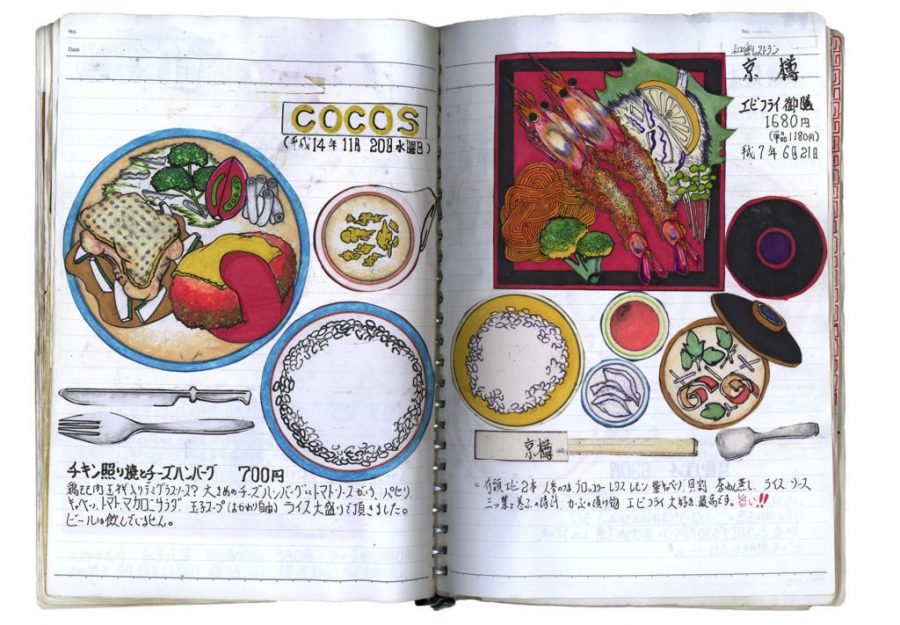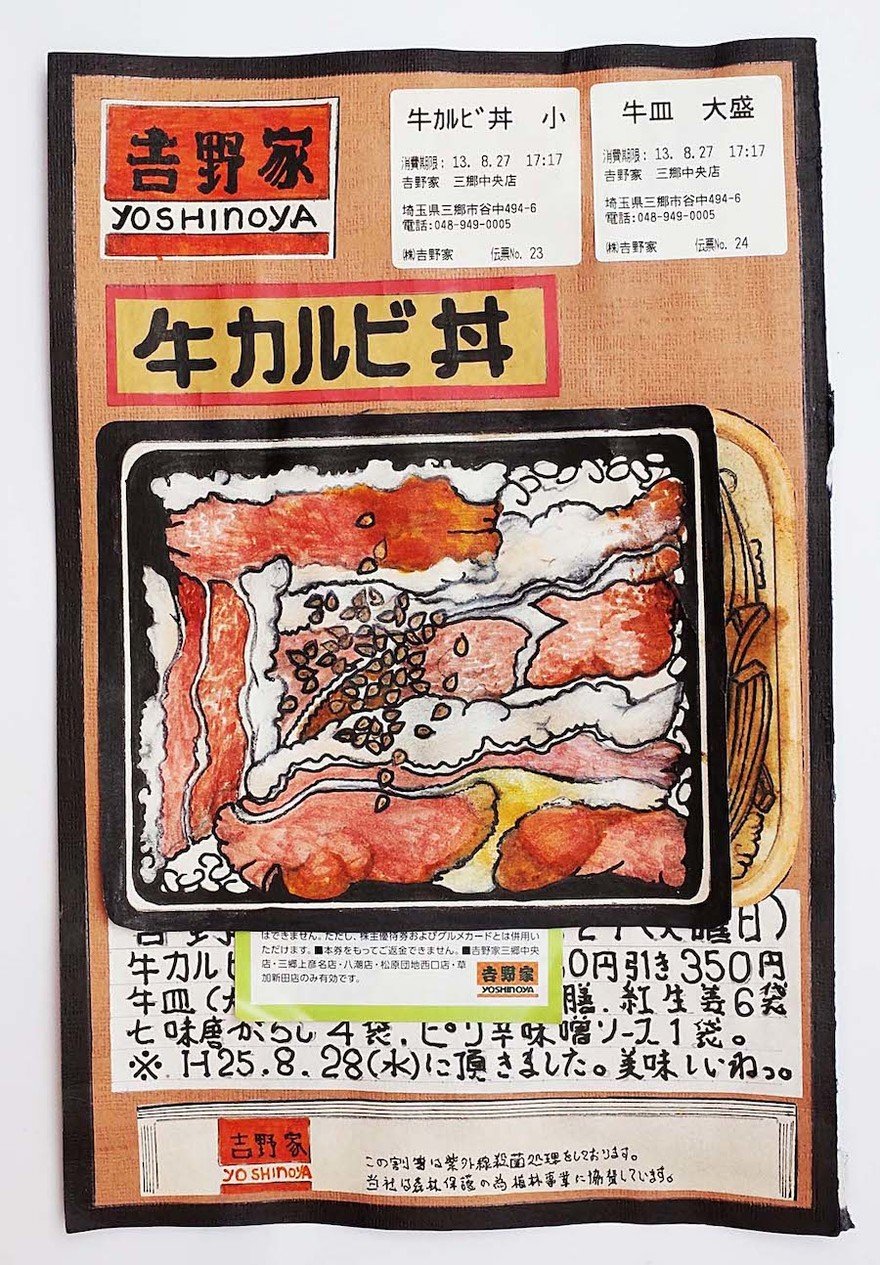
Since the 1980s, Itsuo Kobayashi has drawn a picture of every single meal he eats. However notable we find this practice now, it would surely have struck us as downright eccentric back then. Kobayashi began drawing his food before the arrival of inexpensive digital cameras and cellphones, and well before the smartphone combined the two into the single package we now keep close at hand. We all know people who take camera-phone pictures of their meals, some of them with the regularity and solemnity of prayer, but how many of them could produce lifelike renderings of the food placed before them with only pen and paper?

“The Japanese outsider artist and professional cook, born in 1962, first began keeping food diaries as a teenager,” Artnet’s Sarah Cascone writes of Kobayashi. “In his 20s, he began adding illustrations of the dishes he made at work, and those he ate while dining out.” When, at the age of 46, a “debilitating neurological disorder made it difficult for him to walk, leaving him largely confined to his home,” Kobayashi began to focus on his food diaries even more intensely.
His subjects are now mostly “food deliveries — sometimes from restaurants, sometimes from his mother. And though his day-to-day existence rarely varies, he’s been pushing his practice in a new direction, creating a new series of pop-up paintings.”

After 32 years of making increasingly detailed and realistic overhead drawings of his every meal — including such information as names, prices, flavor notes, and faithfully replicated restaurant logos — Kobayashi’s work has caught the attention of the American art world. The Fukuyama-based gallery Kushino Terrace “gave Kobayashi his US debut in January, at New York’s Outsider Art Fair,” Cascone writes. “His works sell for between $500 and $3,000.” That makes for quite a step up in prestige from his old job cooking at a soba restaurant, though his copious experience with that dish shows whenever it appears in his diary.

But then, after decade upon decade of daily practice, everything Kobayashi draws looks good enough to eat, from bowls of ramen to plates of curry to bento boxes filled with all manner of delights from land and sea. Though hardly fancy, especially by the advanced standards of Japanese food culture, these are the kind of meals you want to savor, the ones to which you feel you should pay appreciative attention rather than just scarfing down. Or at least they look that way under Kobayashi’s gaze, which even the most ardent 21st-century food-photographing hobbyist must envy. Many of us wish to eat more consciously, and the work of this cook-turned-artist shows us how: put down the phone, and pick up the sketchbook.

via Artnet
Related Content:
Wagashi: Peruse a Digitized, Centuries-Old Catalogue of Traditional Japanese Candies
Cookpad, the Largest Recipe Site in Japan, Launches New Site in English
How to Make Sushi: Free Video Lessons from a Master Sushi Chef
The Proper Way to Eat Ramen: A Meditation from the Classic Japanese Comedy Tampopo (1985)
Based in Seoul, Colin Marshall writes and broadcasts on cities, language, and culture. His projects include the book The Stateless City: a Walk through 21st-Century Los Angeles and the video series The City in Cinema. Follow him on Twitter at @colinmarshall or on Facebook.


Amazing